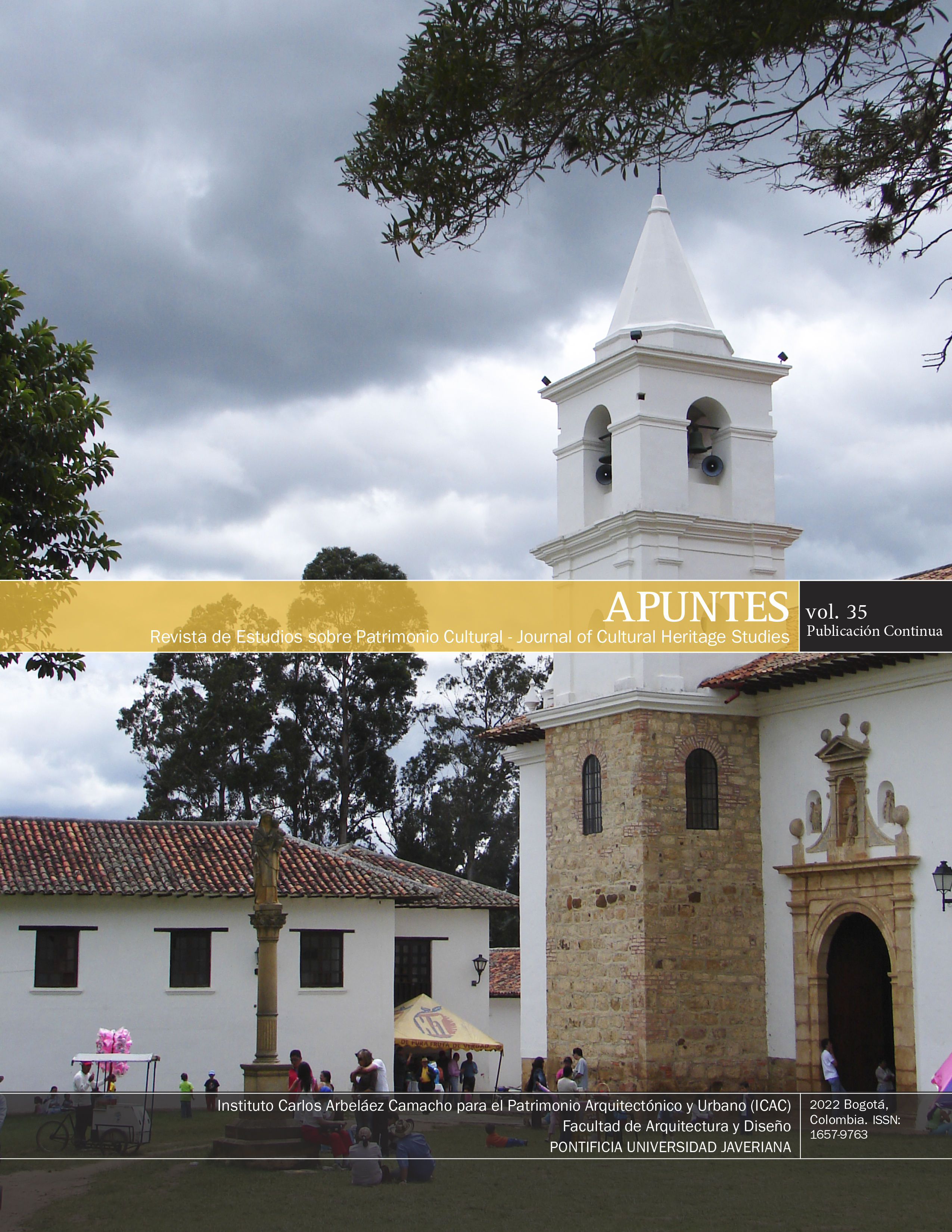Abstract
The Capilla de la Natividad de Nuestra Señora del Ilustre Clero, or Chapel of la Niña Maria, was the largest chapel built by a confraternity in the New Kingdom of Granada. The foundation of the “Hermandad del Clero” came in response to two controversial events that threatened the unity of the Catholic Church: The Reformation, which questioned the authority of the Catholic Church as the only means by which men could be saved, and the theological debate among Catholics about the immaculate conception of Mary. In accordance with the renewed use of the image since the postulates of the Council of Trent, the visual discourse of the chapel, embodied in the main tabernacle and the lateral tabernacles, obeyed a program of protest against the two threats facing the Church.
Bourdieu, P. (2002). Estrategias de reproducción y modos de dominación. Colección Pedagógica Universitaria, (37-38), 1-21.
Combariza, L. (2008). La catedral metropolitana de Tunja: historia, espacios, formas. Academia Boyacense de Historia.
De Certeau, M. (1999). La escritura de la historia. Universidad Iberoamericana. Departamento de Historia.
De Santos Otero, A. (Ed.). (2019). Los Evangelios Apócrifos. Biblioteca de Autores Cristianos.
Fernández, J. (1988). Las pinturas de la hermandad de San Pedro Ad Vincula. Laboratorio de Arte, 1, 133-144. https://dx.doi.org/10.12795/LA.1988.i01.08
Iborra, J. (2017). La antigua cofradía de San Pedro Apóstol. Perspectiva histórico-antropológica sobre tradición, religiosidad y sociabilidad en la Semana Santa de Alicante. En F. J. Campos (coord.), Religiosidad popular: Cofradías de penitencia (pp. 815-832). San Lorenzo del Escorial.
James, M. R. (2013). Los Hechos de Pedro. Desde “El Nuevo Testamento apócrifo” (C. Polanco, trad.). Imprenta de Clarendon, 1924.
Lavrin, A. (1980). La congregación de San Pedro —una cofradía urbana del México colonial— 1604-1730. Historia Mexicana, 29(4), 562-601. https://historiamexicana.colmex.mx/index.php/RHM/article/view/2669
Leal, M. (2017). Mecanismos de reproducción y prácticas devocionales de la Limpia Concepción en el altiplano cundiboyacense, siglos XVII y XVIII. [Tesis doctoral]. Universidad Externado de Colombia. https://bdigital.uexternado.edu.co/handle/001/641
Leal, M. (2021). Inventarios de bienes y alhajas. Altiplano cundiboyacense. Siglos XVII y XVIII. De fuentes materiales a fuentes culturales. En A. Contreras-Guerrero y J. Borja (Eds.), Esencias y pervivencias barrocas. Colombia en el Nuevo Reino de Granada (pp. 141-167). Universo Barroco Iberoamericano. https://rio.upo.es/xmlui/bitstream/handle/10433/11210/Colombia5.pdf?sequence=1&isAllowed=y
Marín, H. (1954). Doctrina Pontificia, IV: Documentos marianos. Biblioteca de Autores Cristianos.
Piñero, A., y Del Cerro, G. (2011). Hechos Apócrifos de los Apóstoles III. Biblioteca de Autores Cristianos.
Rojas, U. (1962). Corregidores y justicias mayores de Tunja y su provincia desde la fundación de la ciudad hasta 1817. Imprenta Departamental de Boyacá.
Várnagy, T. (1999). El pensamiento político de Martín Lutero. En A. Boron (Comp.), La filosofía política clásica. De la Antigüedad al Renacimiento (pp. 142-162). Clacso.

This work is licensed under a Creative Commons Attribution 4.0 International License.
Copyright (c) 2022 María del Rosario Leal del Castillo


